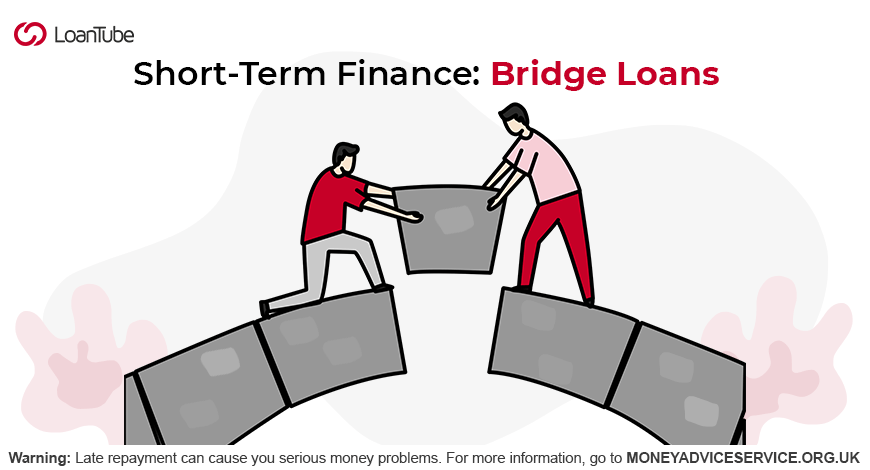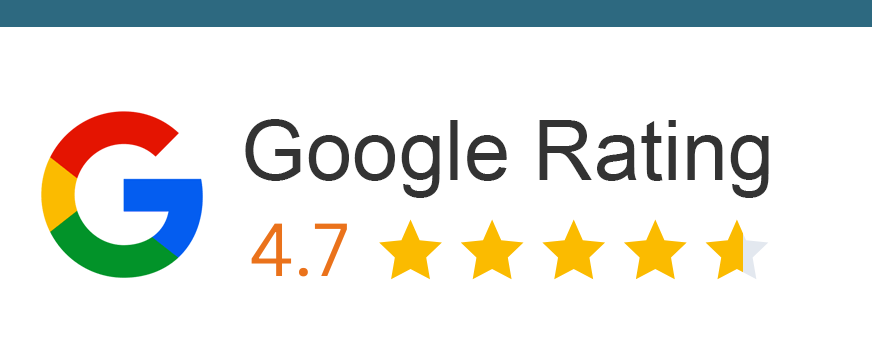A bridge loan, as the name suggests, is one to help you bridge financial gaps. For instance, you’re making a purchase, while awaiting the sale of something else to free up some money. Bridge loans could help you invest in a new home while you await the sale of your existing property.
In this article, we’ll understand the concept of a bridge loan and if this type of finance is a good idea.
Representative Example: £12,000 over 66 months, 31.9% APR fixed. Monthly payment £358.22 Annual interest rate 28.01% fixed. Interest payable £11,642.52. Total repayable £23,642.52. Representative Example: £12,000 over 66 months, 31.9% APR fixed. Monthly payment £358.22 Annual interest rate 28.01% fixed. Interest payable £11,642.52. Total repayable £23,642.52. Representative Example: Loan Amount: £20950.00, Loan Term: 85 Months, Interest Rate: 23.00% PA Variable. Monthly Repayments: £537.44. Total Amount Repayable: £45,682.15. This example includes a Product Fee of £2,095.00 (10% of the loan amount) and a Lending Fee of £714.00 Representative Example: Loan Amount: £20950.00, Loan Term: 85 Months, Interest Rate: 23.00% PA Variable. Monthly Repayments: £537.44. Total Amount Repayable: £45,682.15. This example includes a Product Fee of £2,095.00 (10% of the loan amount) and a Lending Fee of £714.00 Representative Example: Borrowing £3000 over 36 months with a representative APR of 39.9% (variable),the amount payable would be £134.21 a month,with a total cost of credit of £1831.56 and a total amount payable of £4831.56. Representative Example: Borrowing £3000 over 36 months with a representative APR of 39.9% (variable),the amount payable would be £134.21 a month,with a total cost of credit of £1831.56 and a total amount payable of £4831.56.Maximise your options: Compare and apply for loans below with LoanTube
Apply Filters

Loan Amount
£4000 -
£20000
Norwich Trust
Loan Term
1 -
10 years
4.8/5
Representative APR
31.90%
Minimum Age
21 Years

4.8/5
Norwich Trust
Loan Amount
£4000 -
£20000
Loan Term
1 -
10 years
Representative APR
31.90%
Minimum Age
21 Years
Minimum Income
£2000 per month

Loan Amount
£5000 -
£100000
Evolution Money Loans
Loan Term
1 -
20 years
4.5/5
Representative APR
28.96%
Minimum Age
18 years

4.5/5
Evolution Money Loans
Loan Amount
£5000 -
£100000
Loan Term
1 -
20 years
Representative APR
28.96%
Minimum Age
18 years
Minimum Income
Not mentioned

Loan Amount
£1000 -
£10000
1Plus1 Guarantor Loans
Loan Term
1 -
5 years
4.4/5
Representative APR
39.90%
Minimum Age
18 years

4.4/5
1Plus1 Guarantor Loans
Loan Amount
£1000 -
£10000
Loan Term
1 -
5 years
Representative APR
39.90%
Minimum Age
18 years
Minimum Income
Not mentioned
What is a bridge loan?
A bridge loan (aliases bridge finance or bridging loan) is short-term finance borrowed to cover immediate expenses until a person secures permanent funding. Bridge loans usually have a term of up to one year, with comparatively high rates of interest. You may need to provide some collateral security to secure a bridge loan. Since bridge loans are secured loans, you may need substantial, valuable assets to get one – property or land.
The most common use of a bridge loan is in the real estate market. People who are awaiting the sale of a property can use a bridge loan to buy a new one. Real-estate developers can also use bridge loans at auctions to cover the cost of the deposit needed to secure the property.
A bridge loan can solve a variety of purposes, a few of which are listed below:
- Buying a property
- Property development
- Buy-to-let investment
- Business ventures
- Paying a tax bill
- Divorce settlements
How does a bridge loan work?
Bridge loans are an interim financing option, wherein they bridge the gap when finance is needed but isn’t yet available. If you are a homeowner, looking to buy and move to a new one, you’ve got your work cut out for you. Ideally, you would have sold your current house and used that funding to make a down payment on the new one. But it’s easier said than done – this intermediate period can be taxing.
A bridge loan, albeit, can help you with these financial needs. The loan term for a bridge loan is usually below 12 months. So you can invest in a new home regardless of whether the sale of your old home is complete or not.
The process typically works like this:
- You can take out a bridge loan to get some equity in your new home
- Make a down payment using the funding received from the bridge loan
- Once the sale of your old home is complete, use the proceeds to repay your bridge loan.
A bridge loan can help you qualify for up to 80% of the loan-to-value on your existing house. This is important because you need to have at least 20% of equity to qualify, even if you manage to, you may not get enough funding from the loan.
Bridge loans have comparatively high rates of interest than other property financing options since they’re short-term loans. The rates could range from 0.4% up to 2%. So you might feel that the interest that you’re paying is a few notches higher than that of a mortgage or a home equity loan. Additionally, these loans might come at a costly fee, which increases the overall cost of the loan.
Is a bridge loan ‘interest-only’?
Bridge loans are short-term loans with high-interest rates. You may get an offer with a fixed or variable interest rate, which is set by your lender. Since these loans are short-term, APR doesn’t apply. So, even a minute increment in the interest rates could increase the overall cost of your loan.
This is how interest can be charged on your bridge loan:
- Monthly – You pay the interest monthly and it’s not added to your ridge loan.
- Deferred or Rolled up – You pay the entire interest at the end of your bridge loan term.
- Retained– You borrow the interest for an agreed-upon period and pay it all back at the end of your loan term.
Your lender might allow you to mix these options. For instance, you could start by keeping the interest for the first 3 months and then move to monthly repayment. Just be wary of all the costs involved in the loan and think the procedure through. Following are some of the additional costs involved in a bridge loan:
- Facility charge: Accounts for 1 to 2% of the loan, and contributes towards the arrangement of the loan.
- Exit fee: This fee varies from lender to lender. This is the cost of premature repayment of the loan, usually priced at 1% of the loan amount.
- Admin charges: Fee charged for the paperwork completion once the loan procedure is complete
- Legal fees: This contributes to the legal fees set by your lender.
- Valuation charges: This charge pays for the surveyor that evaluates your property.
- Broker charges: If you hire a broker to find you the best deals, this is the fee charged by them.
How hard is it to qualify for a bridge loan?
Lenders for bridge loans have stringent eligibility criteria. This is in terms of credit as well as the debt-to-income ratio. There’s a chance that you’ll be paying toward two mortgages for some time. Thus, lenders set a high bar for qualification, to minimize the risk of default.
Do check our article for homebuyers in the UK. Learn more about the cost of homes in UK’s 15 most sought after cities.
Is a bridge loan a good idea?
Bridging loans act as a stop-gap and help facilitate a new purchase while you await the release of funds from an ongoing sale. There are both upsides and downsides to this financing option. Here’s what you should consider:
Merits of a bridge loan:
- You won’t have to move around temporary housing: Before closing the sale of your old home, you’ll have to consider temporary accommodation to reside at. With a bridge loan in hand, you can pay the deposit for a new home and move in directly.
- A bridge loan helps you make a strong offer: An offer to buy a house sans a bridge loan is contingent upon you going through with the sale of your old home. A seller would naturally be inclined towards someone without a contingency. A bridge loan will eradicate this contingency and give you an edge over other buyers.
- You may get an offer with a lower interest rate: A bridge loan allows you to make a generous down payment. A higher down payment portrays you as a low-risk borrower. This could help you qualify for a loan with low-interest rates. A bridge loan gives you the chance to make a hefty down payment, ergo, a lower interest rate.
Demerits of bridge loans:
- The cost: Bridge loans are slightly on the expensive side, compared with their alternatives. All the costs involved, along with high-interest rates tend to increase the overall cost of this loan.
- Strict eligibility criteria: When you’re buying a new home while awaiting the sale of the old one, there’s a chance you’ll be on two mortgages for a while. Handling two mortgages is a huge financial burden. This is why lenders have stringent criteria concerning credit and debt-to-income ratios.
- LTV is capped at 80%: Bridge loans provide a combined Loan-to-Value ratio of up to 80%. So your mortgage and bridge loan, combined, cannot exceed beyond 80% of the property’s market value. If your LTV is already over 80%, you may not get the expected amount of money from a bridge loan.


